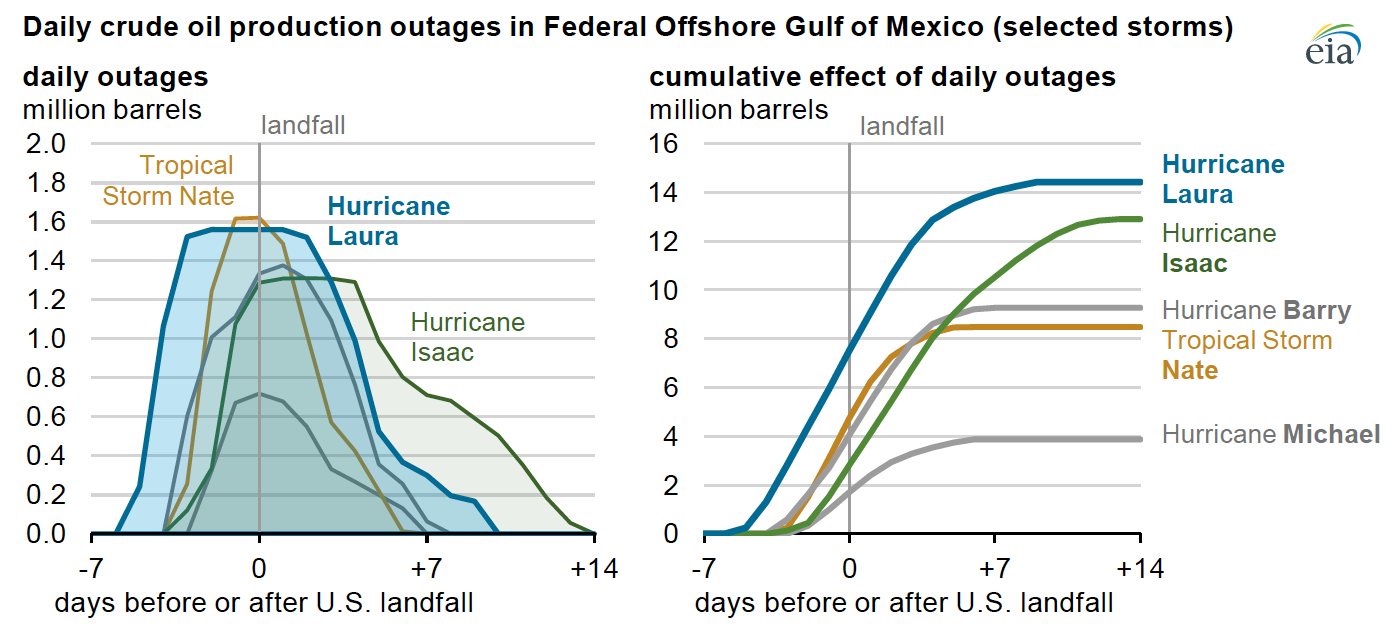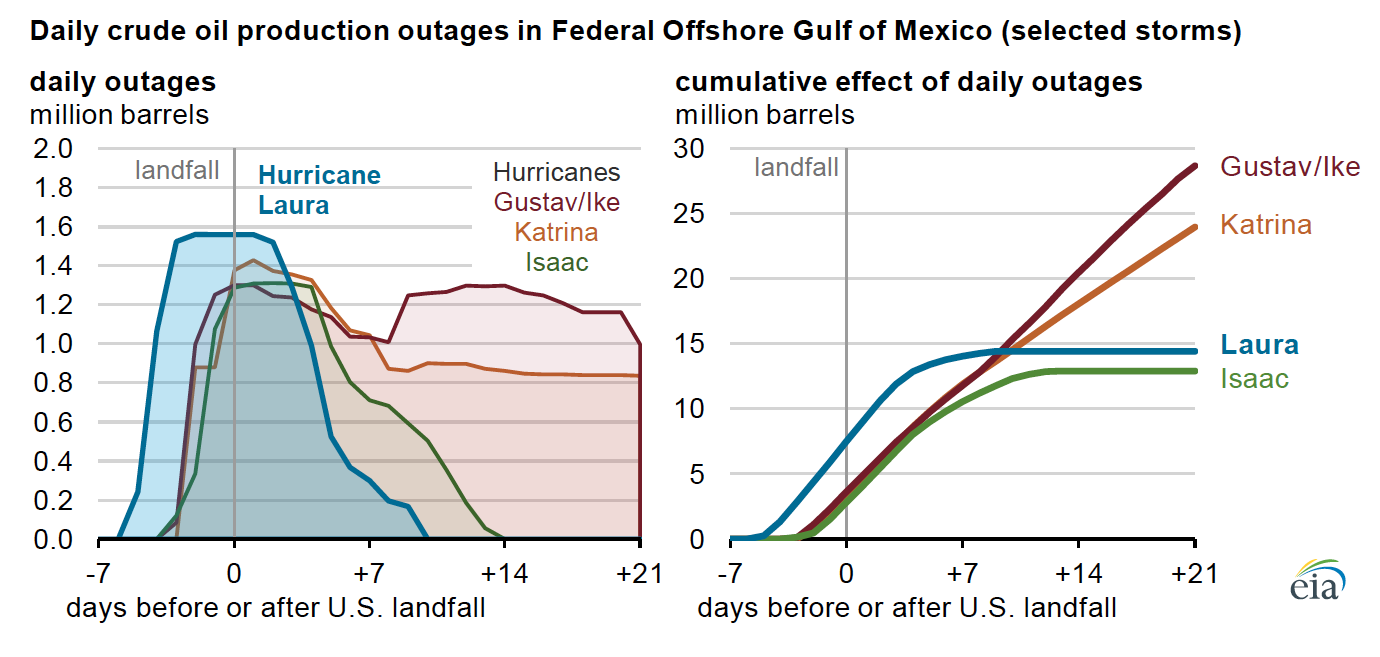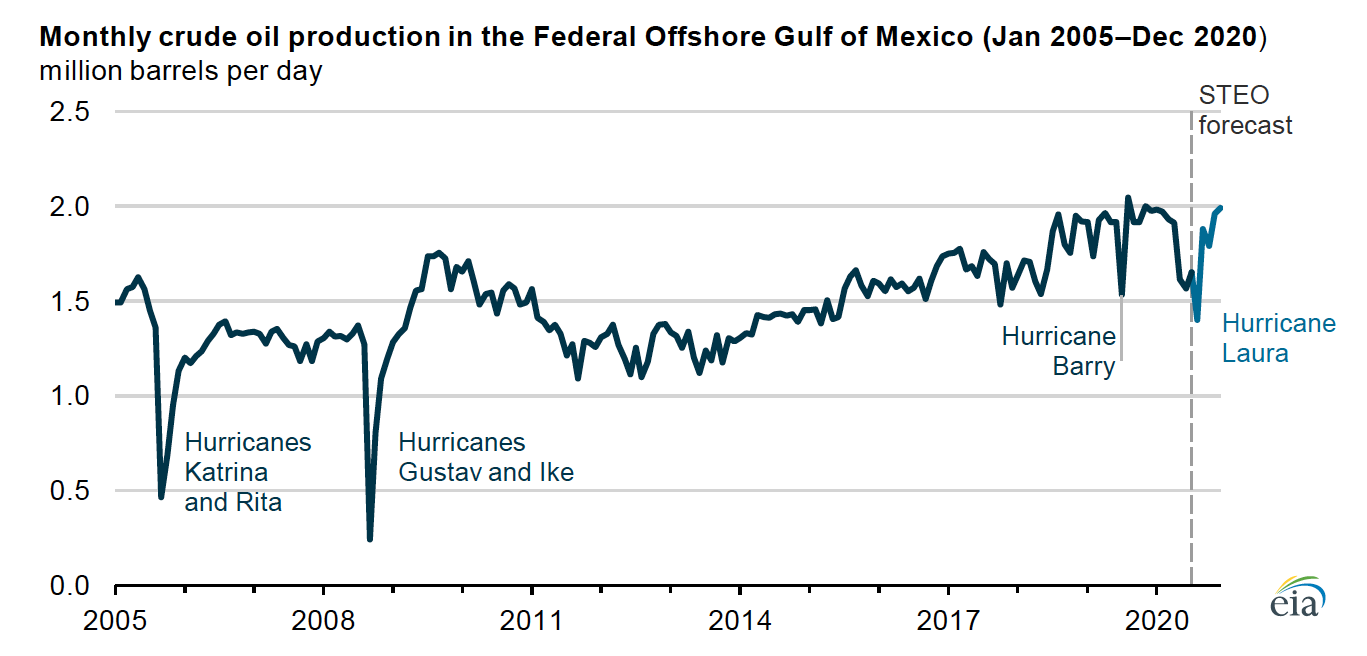Hurricane Laura shut in more Gulf of Mexico crude oil production than any storm since 2008
Oct 02, 2020According to daily estimates from the U.S. Bureau of Safety and Environmental Enforcement (BSEE), Hurricane Laura reduced crude oil production in the Federal Offshore Gulf of Mexico by an estimated 14.4 million barrels over a span of 15 days, the most of any hurricane since the combined effect of Hurricanes Gustav and Ike in 2008.

At its peak, Hurricane Laura forced the evacuation of all 16 dynamically positioned drilling rigs (which are not physically tethered to the seafloor), 11 of the 12 nondynamically positioned drilling rigs (which are physically moored to the seafloor), and nearly half of the 643 offshore production platforms operating in the Federal Offshore Gulf of Mexico.
Without personnel to oversee and manage these platforms, well operators shut in (that is, stopped) crude oil production. Federal Offshore Gulf of Mexico production shut-ins reached a daily high of 1.56 million barrels on August 25—two days before Hurricane Laura made landfall—equivalent to an 84% reduction in the region’s average daily crude oil production in 2019. In addition, Hurricane Marco likely affected the magnitude and timing of the production shut-ins from Hurricane Laura. Hurricane Marco made landfall on August 24 and was still dissipating as Hurricane Laura passed through the region.
Production shut-ins resulting from Hurricane Laura were much smaller than the combined production disruptions following Hurricanes Gustav and Ike in 2008 and Hurricane Katrina in 2005. According to BSEE reports, Hurricanes Gustav and Ike shut in at least 69 million barrels over a span of 168 days. Hurricane Katrina and later Hurricane Rita collectively shut in at least 163 million barrels of production over a span of 298 days. Some of the platforms affected by those storms were irreparably damaged.

As storms approach, operators typically prepare their platforms by securing equipment and, if necessary, evacuating the platforms. Operators can pull drilling rigs out of the storm’s projected path or physically anchor them to the seabed, depending on the type of platform. After a storm has made landfall, operators inspect affected platforms and rigs. Damaged rigs are typically returned to ports for repair; platforms and pipelines are repaired onsite.
Crude oil production typically resumes a few days after a tropical cyclone makes landfall, but in some cases, production can remain offline for months. In 2005, many platforms remained shut-in long after Hurricane Katrina had passed and did not return to operation before Hurricane Rita passed through the area later that year.
In the September 2020 Short-Term Energy Outlook, the U.S. Energy Information Administration (EIA) estimates that Federal Offshore Gulf of Mexico crude oil production fell to 1.4 million barrels per day (b/d) in August, the lowest monthly value since early 2015. EIA expects Federal Offshore Gulf of Mexico crude oil production to recover to nearly 2.0 million b/d by December 2020 and average 1.8 million b/d for the year.

Principal contributors: Jesse Barnett, Kirby Lawrence
Similar Stories

U.S. Department of Energy: $20.2 million in projects to advance development of mixed algae for biofuels and bioproducts
View Article
New funding propels Pier Wind at Port of Long Beach
View Article
Most U.S. petroleum coke is exported
View Article
Paired Power installs two PairTree solar EV chargers at the Port of Hueneme
View Article
KR, HD KSOE, HD HHI, KSS Line, and Liberian Registry partner to develop safety guidelines for ship-to-ship ammonia bunkering
View Article
U.S. associated natural gas production increased nearly 8% in 2023
View ArticleGet the most up-to-date trending news!
SubscribeIndustry updates and weekly newsletter direct to your inbox!





